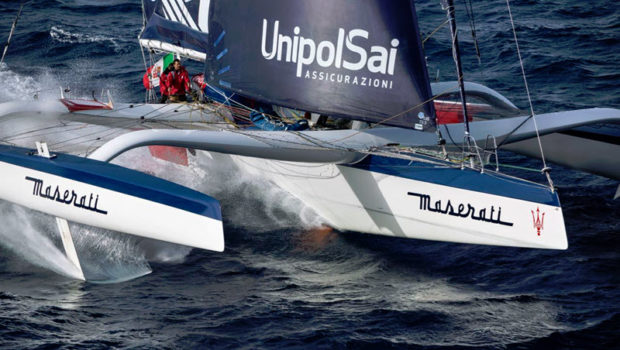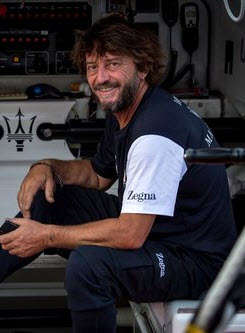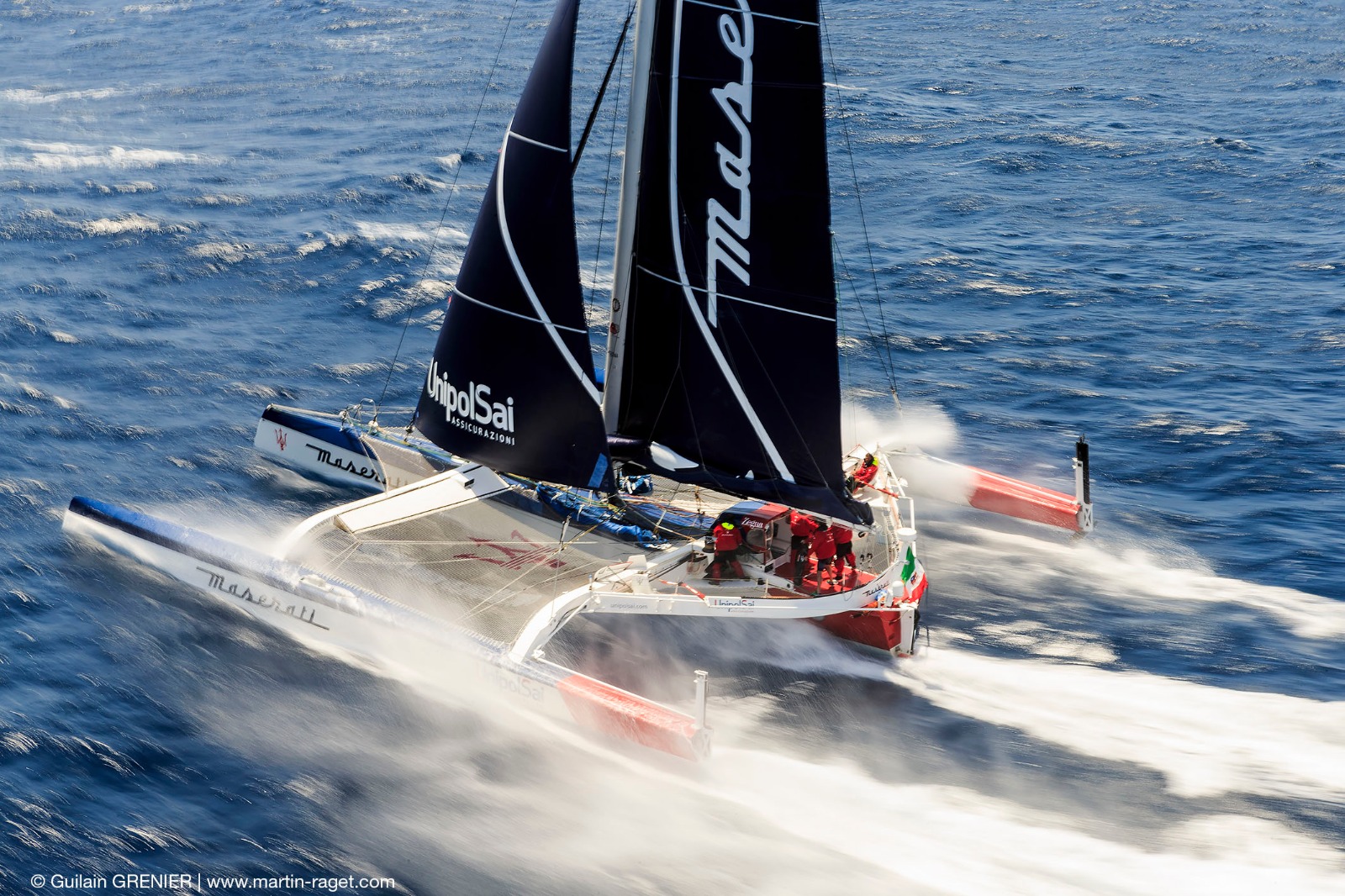A Fascinating Voyage of Discovery
Published on November 22nd, 2016
Sail Racing Magazine is an iPhone and iPad magazine for fans of sailboat racing, with their October/November 2016 Issue now available to download from the Apple App Store. As a tease from that Issue, here’s a report on Giovanni Soldini and the art of ocean flight…
He has been Italy’s most famous ocean going yachtsman for more than two decades but Giovanni Soldini remains very much at the cutting edge of yacht racing technology.
His unorthodox style and heroic ocean racing exploits made him a household name in his home country and now the 50-year old skipper is flying the flag for Italy again with a major breakthrough in the largely uncharted waters of offshore foiling.
Until a few years ago, ‘foiling’ – using hydrofoils to lift a boat clear of the water to dramatically increase its speed – was limited to featherweight dinghies like the International Moth and some kite surfers.
However, when the America’s Cup switched to foiling catamarans the cash flowed in sparking a series of design breakthroughs that made the previously unthought-of idea of foiling across rough oceans into a realistic proposition.
Soldini joined the foiling generation earlier this year with the purchase of a 70-foot customised trimaran from Baron Benjamin de Rothschild’s Gitana Sailing Team. The French syndicate had been using the boat as a test platform to develop their own foiling designs but since taking charge Soldini has since made considerable refinements of his own.
Repainted in the distinctive livery of his longtime backer, luxury car manufacturer Maserati, in the last few months Soldini and his five-man crew have sailed well over 4000 nautical miles as they tested and tweaked the new boat’s foil configuration.
One recent modification – the addition of a horizontal surface to the lower end of the central carbon dagger board to provide extra lift – could, Soldini believes, be the key to the three-hulled boat flying with stability on the open ocean.
“Previously we had been set up like everyone else, with the boat supported on one L-shaped foil and one of the T-foil rudders at the back,” Soldini explains. “On flat water, foiling is easy but in the open ocean the influence of the waves can make the boat highly unstable and prone to crash down off its foils.
“When we tried supporting the boat in three places rather than two by using a central dagger foil as well and the boat suddenly became much more stable.”
A big step forward but the question remained if the new set up could stand up to big seas. There was only one way to find out so the Maserati crew set off into 40 knots winds and pounding waves in the Gulf of Lion to see what would happen.
The sailors returned exhausted but elated having become the first to prove high speed foiling flight possible in rough conditions.
“It’s a transformation,” Soldini declared afterwards. “Stability has been significantly boosted and now she can fly in conditions that were unthinkable even a month and a half ago.”
The innovative central foiling concept was dreamed up by renowned French designer Guillaume Verdier and his team. The designer and skipper are far from strangers – in 2008 Verdier designed Soldini’s highly successful Class 40 monohull Telecom Italia Mobile. Soldini and his crew have since fine-tuned the configuration that enables the Italian tri to fly at speeds approaching 40 knots in the open ocean.
After an intense summer of testing and development, this October the Maserati crew were set to test the potency of their flying trimaran in the 608-mile Rolex Middle Sea Race from Malta around Sicily and back.
Disaster struck on the delivery trip across the Mediterranean however when a high speed collision with an unidentified floating object tore off one of the boat’s two rudders. The crew nursed their wounded boat to Malta but were forced to downgrade it to non-foiling mode for the race. Despite this handicap Soldini’s men still slashed more than 10 hours off the previous race record time after ripping around the course in two days, 11 hours and 29 minutes.
The Maserati sailors now face their biggest challenge as they take on the Royal Ocean Racing Club’s Transatlantic Race – a 3000-mile dash from the Canary Islands to the Caribbean island of Grenada beginning November 26.
The trimaran’s full potential will still be unknown as it will still be configured in test mode, so able to foil only on starboard tack.
The Atlantic crossing is likely to be a tougher test than the Middle Sea Race but Soldini in confident his boat and his crew will be up to the challenge.
“We are all looking forward to our chance to race our new boat in foiling mode for the first time,” he said. “As well as racing, we will still be testing. There will be other boats similar to Maserati but non-foiling so it will be interesting to line up against them on long offshore courses to see what we can learn.”
“We are the forefront of this exciting revolution towards ocean foiling and we are glad to be pioneers on what we know will be a fascinating voyage of discovery.”
————
Sail Racing Magazine is an iPhone and iPad magazine for fans of sailboat racing. They cover the breadth of the sport – from dinghies to round-the-world ocean racers and everything in between. Each issue is packed with 100% exclusive feature length articles, interviews and news stories, as well as stunning sailing images from the world’s finest sailing photographers. Sail Racing Magazine is published six times per year and readers can purchase one-off individual issues or save money with a 12-month 6 issue subscription or a two-month single issue subscription. To purchase… click here.











 We’ll keep your information safe.
We’ll keep your information safe.